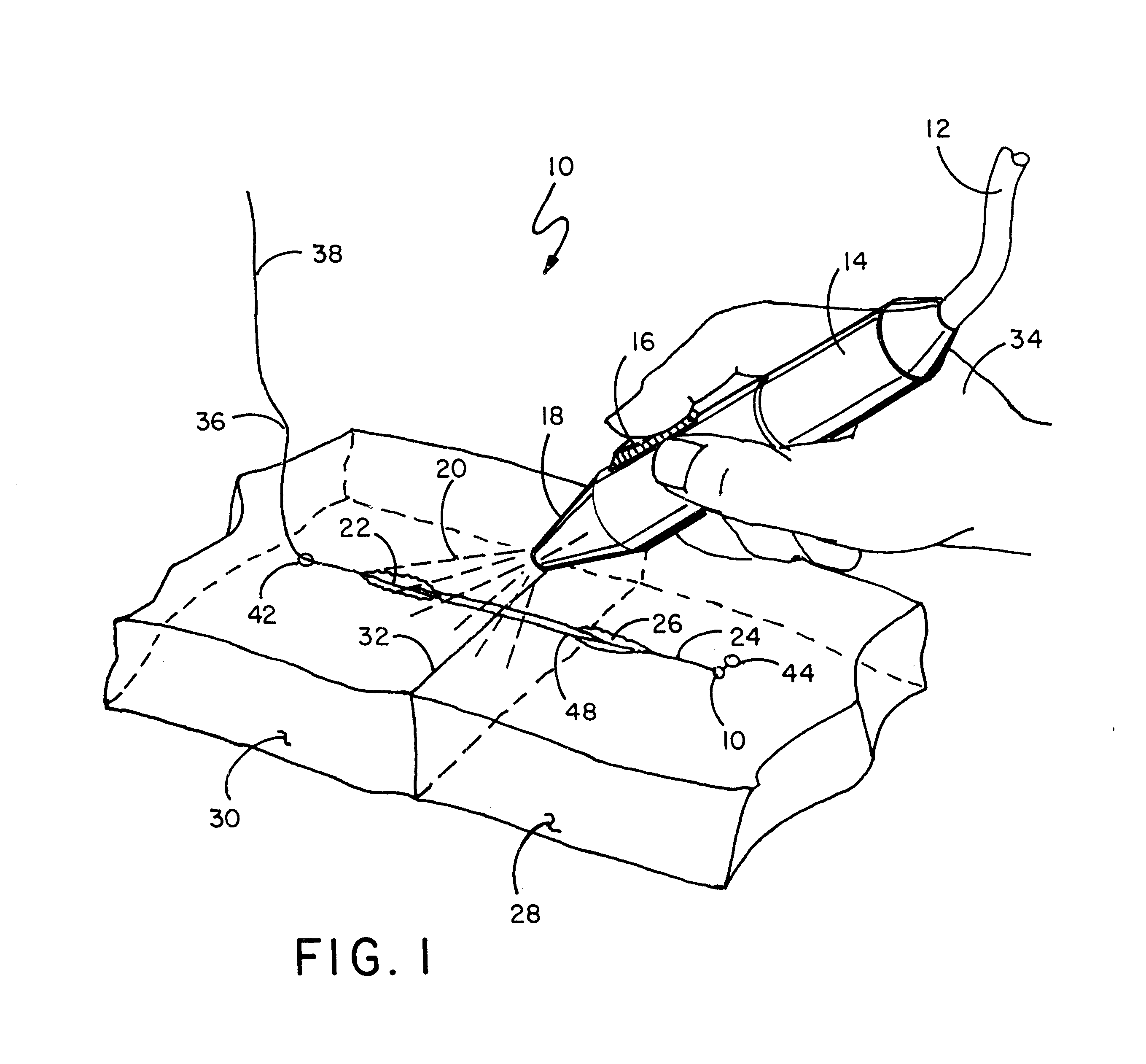Suture and method of use
a technology of sutures and retainers, applied in the field of sutures, can solve the problems of skin clumping and retainer members being attached under
- Summary
- Abstract
- Description
- Claims
- Application Information
AI Technical Summary
Benefits of technology
Problems solved by technology
Method used
Image
Examples
Embodiment Construction
FIG. 1 illustrates a perspective view of suture 10 of this invention which is comprised of elongated body member 24 having first and second ends 48 and 46 on which body member are respectively positioned adhesive segments 22 and 26. Adhesive segments 22 and 26 are activatable by high-frequency radiation waves. Although not necessary, some sutures can have thread member 36 attached at one end to the shank of needle member 38 and at the other end to first end 48 of body member 24. Needle member 38 is entered at insertion point 40 in first side 28 of cut 32 of the body tissue and then drawn through the body tissue and out the first side 28 of cut 32 and into the second side 30 of cut 32. Needle member 38 is then drawn up through the body tissue through exit point 42. One then draws the suture until adhesive segments 22 and 26 are in place on both sides of the tissue and when wide stop member 44 contacts the surface of the skin on first side 28, preventing any further internal movement....
PUM
 Login to View More
Login to View More Abstract
Description
Claims
Application Information
 Login to View More
Login to View More - R&D
- Intellectual Property
- Life Sciences
- Materials
- Tech Scout
- Unparalleled Data Quality
- Higher Quality Content
- 60% Fewer Hallucinations
Browse by: Latest US Patents, China's latest patents, Technical Efficacy Thesaurus, Application Domain, Technology Topic, Popular Technical Reports.
© 2025 PatSnap. All rights reserved.Legal|Privacy policy|Modern Slavery Act Transparency Statement|Sitemap|About US| Contact US: help@patsnap.com



